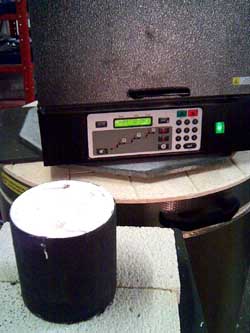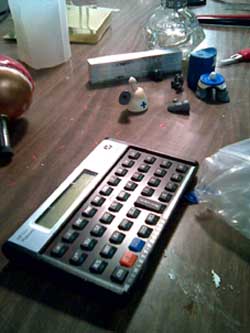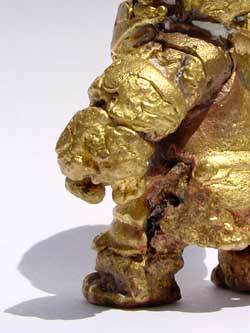Trial One- To start off, I went to Linday’s Books to get basic info on how to cast bigger than jewelry sized metal objects. If you like to build stuff, Lindsay’s is great. Just need to find time to build that backyard sawmill so that we can increase the size of our office because we are busting at the seams!
My friend Alan, who let us use his shop a while back (remember the trophy bases?) got inspired to cast the Castle Crashers figurines because his son is a huge Behemoth fan. Alan was looking for something to experiment with bronze casting and the palm sized Castle knight was just right for the first experiments. When cast, the knight weighs in at about 10 ounces, so he has a nice heft to him.
First thing is of course a great calculator. I’m not really sure why, but it makes it feel super scientific since we are going to be working with molten metal heated to nearly 2000 degrees. In the background you can see one of the knights who has been drawn and quartered.
Usually to cast something of this size you’d use the lost wax method of casting. This means the sculptor would sculpt a model out of clay, make a mold out of plaster, then cast in wax. The wax copy of the sculpture then has sprues attached to it so the bronze can flow to all parts of the sculpture.
Once the sprues are attached and a funnel like indentation is made, the parts are embedded in plaster contained by an iron cylinder. Then it is in to the oven to bake out the wax.
In order to save time, Alan decided to pioneer the “lost knight” method of casting, where sprues are added to the knight figurine and it is cast directly into the plaster. He figured since it will be baking out for a while at 1900 degrees, it wouldn’t matter if it was PVC or wax…



